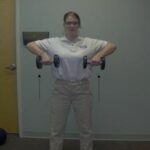The following is the first article in a three-part series recounting my experience with rotator cuff surgery and the subsequent recovery.
When preparing for a recent rotator cuff surgery I was unable to find many first-hand accounts available online about the experience. There were plenty of posts regarding the procedure itself filled with a lot of medical jargon, but no behind-the-scenes-account of what to expect. Now that I am on the other side of the surgery I thought I would publish my own account for anyone preparing for the procedure, and the lengthy recovery process to follow. The full Survival Guide will actually appear as three separate articles; “Leading Up to Surgery”, “The Operating Room”, and “The Long Road to Recovery.”
About a year ago I began to experience pain in my right shoulder while lifting weights. It wasn’t a sudden injury, but more a gradual pain that worsened when performing things like bench presses and front or lateral raises. I gave up the weights for a while and the pain only slightly lessened. Eventually, over a period of a few weeks, the pain began to interfere with sleep and I finally broke down and saw an orthopedic surgeon.
During my initial consultation my shoulder was x-rayed from every conceivable angle. The x-ray technician asked if I remembered hearing a “pop” during my workouts. I told her that I did not, but that I could hear a “pop” when I raised my arm beyond a certain point. I would later find out this was the rotator cuff tendon being “impinged” on a bone spur. After the x-rays were taken I met with the surgeon again who explained that I had significant bone spur development in my acromioclavicular joint (commonly referred to as the AC joint). This spur acted as a stalactite hanging from a cave, slowly tearing away at the rotator cuff tendons as they passed through the joint. The surgeon set me up for an MRI to get a better view of any tendon damage and now came the waiting game. I waited about a week for the MRI, and then another week to get back to the doctor’s office for the results. The MRI did not indicate a torn rotator cuff, so the doctor recommended physical therapy and prescribed a round of Prednisone – a steroid aimed at shrinking an inflamed tissue in the joint.
I followed up with physical therapy, but in the weeks and months that followed the pain never subsided. In fact, it got worse the harder I pushed in therapy, and on my own. After a few months I returned to the surgeon and indicated I was still feeling pain. Things like trying to start a mower, or tossing a ball with my son now brought excruciating pain. I told him I didn’t want to live with my arm in such bad shape and he agreed it was time to explore other options. He described an arthroscopic procedure that could smooth out the bone spur. While scoping the inside of my shoulder joint, any damage to the rotator cuff detected would also be repaired. Surgery was set for a month from that date.

